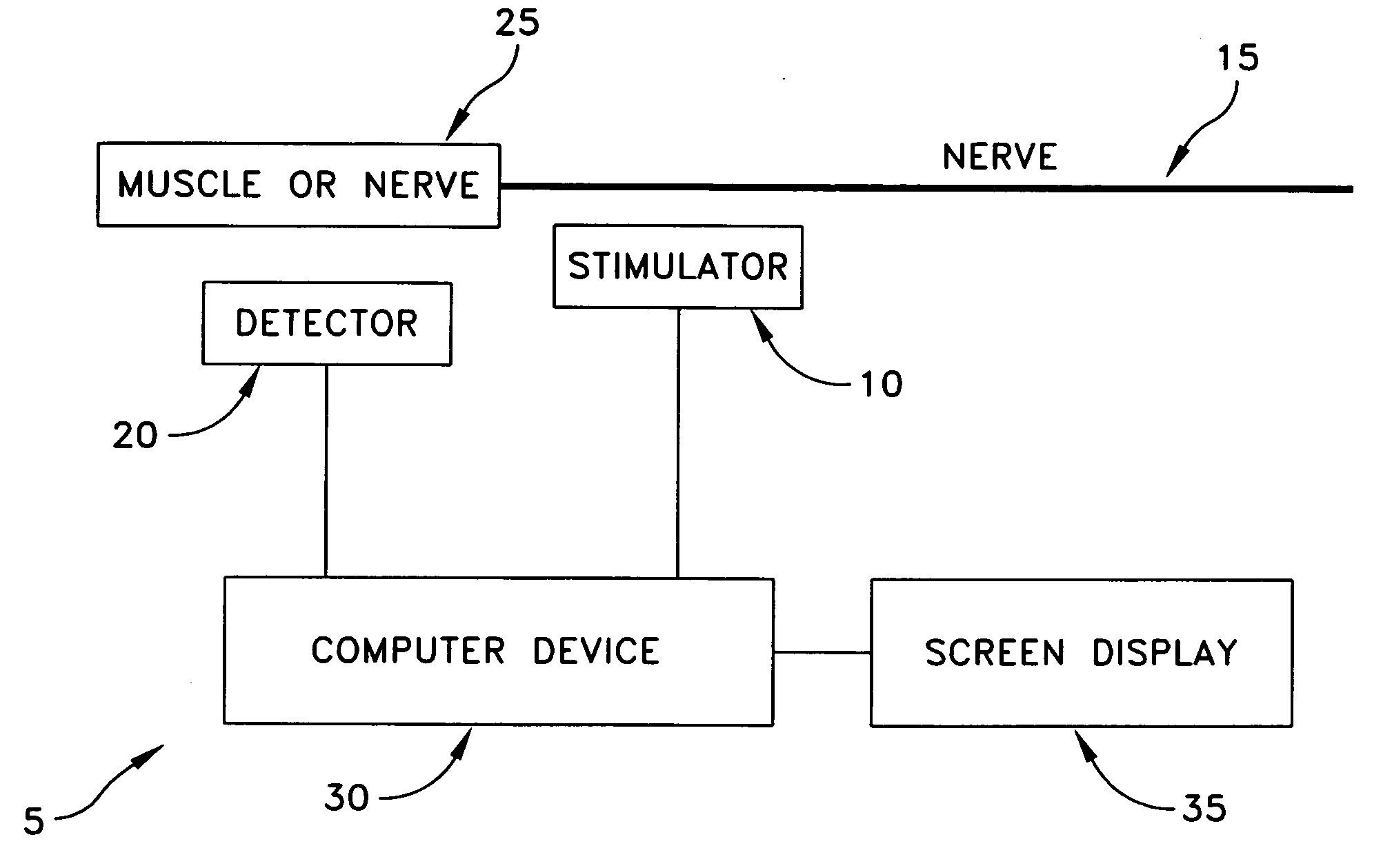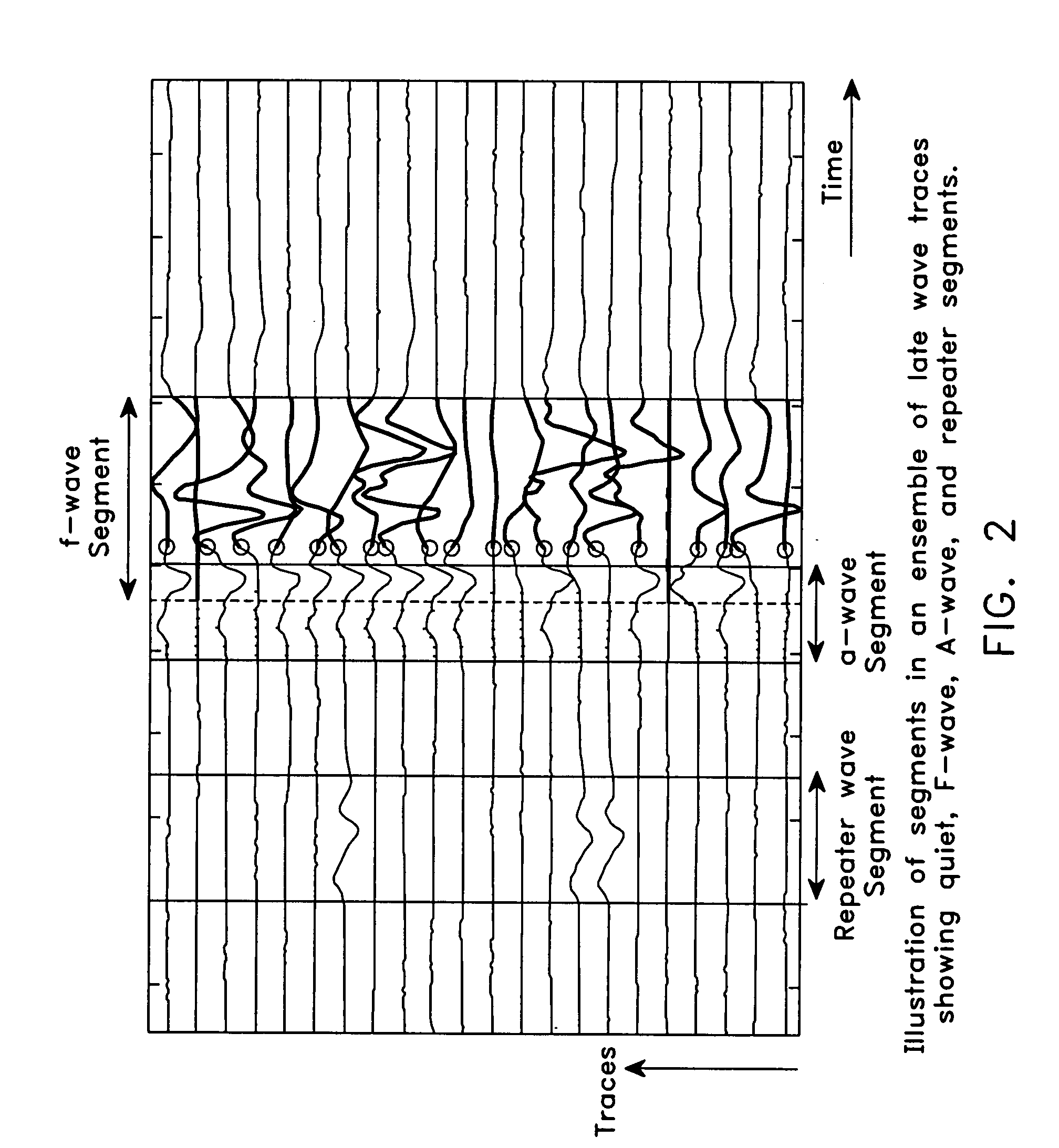Detection and classification of neuromuscular late wave activity for the assessment of neuromuscular function
a neuromuscular function and late wave activity technology, applied in the field of neuromuscular function assessment methods and apparatuses, can solve the problems of inability to use hands, slow nerve conduction over long nerve segments, and inability to detect the presence of a single nerve, so as to enhance the accuracy of f-wave latency assignment
- Summary
- Abstract
- Description
- Claims
- Application Information
AI Technical Summary
Benefits of technology
Problems solved by technology
Method used
Image
Examples
Embodiment Construction
[0085]In a nerve conduction study (NCS), the nerve is electrically stimulated so as to depolarize a short segment of the nerve at the point of stimulation. If the depolarization is of sufficient magnitude, a compound action potential is induced in some number of the axons within the nerve. This compound action potential propagates distally and proximally from the point of stimulation. By evaluating the propagation of these compound action potentials through the nerve, the assessment of neurological function can be made.
[0086]See, for example, FIG. 1, which illustrates two compound action potentials (i.e., CMAP and F-wave compound action potentials) in the context of an NCS measurement of a motor nerve.
[0087]For the sake of convenience, the compound action potentials may hereinafter frequently be discussed in the context of an NCS measurement of a motor nerve. However, it should be appreciated that the discussion of compound action potentials also has application to sensory nerves an...
PUM
 Login to View More
Login to View More Abstract
Description
Claims
Application Information
 Login to View More
Login to View More - R&D
- Intellectual Property
- Life Sciences
- Materials
- Tech Scout
- Unparalleled Data Quality
- Higher Quality Content
- 60% Fewer Hallucinations
Browse by: Latest US Patents, China's latest patents, Technical Efficacy Thesaurus, Application Domain, Technology Topic, Popular Technical Reports.
© 2025 PatSnap. All rights reserved.Legal|Privacy policy|Modern Slavery Act Transparency Statement|Sitemap|About US| Contact US: help@patsnap.com



